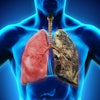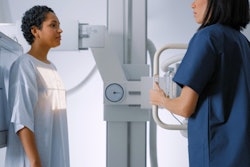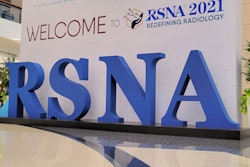
A new report released November 16 by the American Lung Association (ALA) has found that although overall lung cancer survival rates have improved, survival remains lower among those who are Black, Indigenous, and People of Color (BIPOC).
The association's "State of Lung Cancer" report shows that the overall five-year survival rate for lung cancer has climbed from 14.5% to 23.7% in the past year, but among communities of color it is 20%, and among Black individuals, 18%.
The findings come just months after the U.S. Preventive Services Task Force (USPSTF) released updated CT lung cancer screening guidance that expanded the pool of eligible individuals by lowering the starting age from 55 to 50 and adjusting smoking history from 30 pack years to 20 pack years. But they also demonstrate that the effort to boost lung cancer screening adherence must increase.
"The report highlights important news -- more people are surviving lung cancer -- however, it also underscores the fact that, sadly, health disparities persist for communities of color," ALA president and CEO Harold Wimmer said in a statement. "Everyone deserves the opportunity to lead a full and healthy life, so more must be done to address these health disparities."
Previous research has shown that racial and ethnic minority patients diagnosed with lung cancer experience worse disease outcomes than their white counterparts, are more likely to be diagnosed with advanced cancer, are less likely to receive surgical treatment, and are more likely to receive no treatment, the report noted. It also found the following:
- The national average for five-year lung cancer survival rates is 23.7%. This rate is highest in Connecticut, at 28.8%, and lowest in Alabama, at 18.4%.
- Across the U.S., only 24% of lung cancer cases are diagnosed at an early stage, when the five-year survival rate is as high as 60%; 46% of cases are not identified until a later stage, when the survival rate is 6%. Early diagnosis rates are highest in Massachusetts (30%) and lowest in Hawaii (19%).
- Only 5.7% of individuals at high risk for lung cancer underwent screening, which can reduce the mortality rate of the disease by 20%. Massachusetts has the highest screening rate (17.8%), while California and Wyoming have the lowest (both 1%).
- Only 20.7% of patients with lung cancer were treated surgically in the past year, and 21.1% of individuals with lung cancer did not receive any treatment. Reasons for lack of treatment can include "lack of provider or patient knowledge, stigma associated with lung cancer, fatalism after diagnosis, or cost of treatment," the ALA noted.
The bottom line is that lung cancer screening uptake is a critical issue in the U.S., the ALA said in its statement.
"The Lung Association encourages everyone to join the effort to end lung cancer," it said.




















